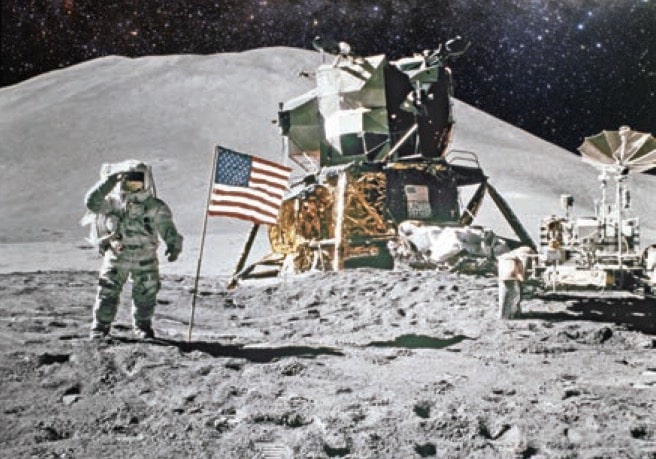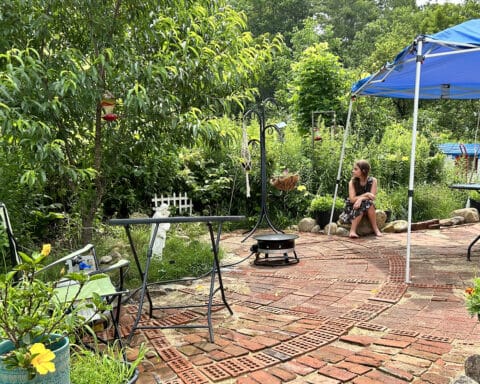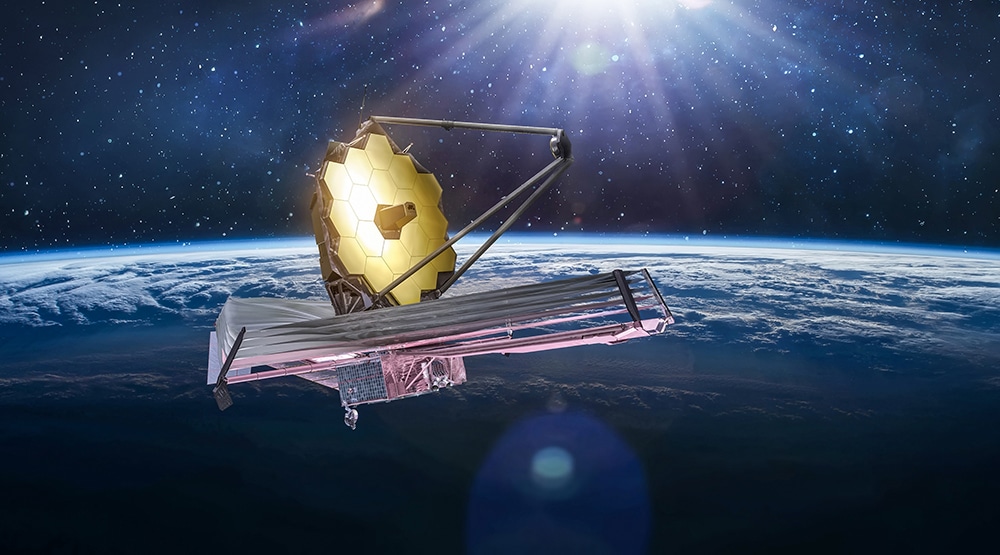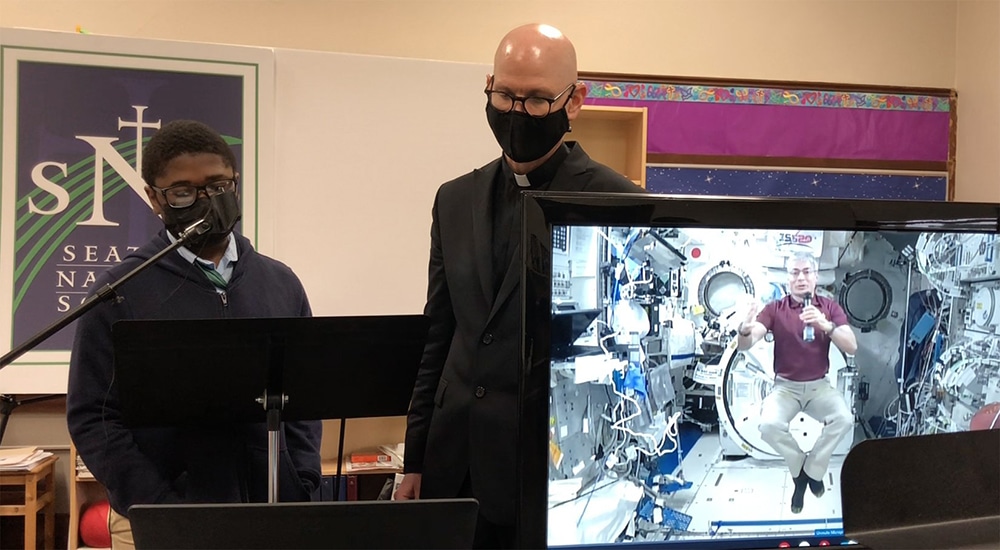Nearly 50 years ago, Father Richard Walsh, a newly-ordained priest from Ireland, was settling into his first assignment at his first parish — Church of Our Saviour in Cocoa Beach, Florida, adjusting to the sun and sand and salt that were so different from the cool, green Irish farmland of his youth. Only a few miles away, human history would change forever from the launchpads at Kennedy Space Center and Cape Canaveral Air Force Station. Man was going to the moon.
“It was a very exciting time,” Father Walsh told Our Sunday Visitor. “Every time there was a shot coming up, whether it was manned or unmanned, we would pray for it at Mass,” he said, adding that many of the staff and astronauts working on the space program attended the parish.
Apollo missions
Father Walsh arrived in Cocoa Beach in 1968, shortly before the launches of Apollo 9 and Apollo 10, manned flights that circled the Earth and the moon, respectively. Over the course of the Apollo program, he was able to witness several “moonshot” launches and developed relationships with both the ground and space crews of the space missions. Indeed, nearly the entire parish was involved in the space program, Father Walsh recalled.
| Breakfast with Astronauts |
|---|
|
Astronauts were frequent visitors to Father Walsh’s rectory during the Apollo Mission. Eugene Cernan, a member of the Apollo 10 and Apollo 17 flights and the 11th man to land on the moon, regularly attended the parish, and Apollo 8 astronaut Bill Anders even came to eat breakfast in the rectory. “In my life who’d ever thought I’d be sitting down with an astronaut for breakfast,” Father Walsh said. “Even though he was an astronaut, he was an ordinary guy, and I enjoyed joking and spending time with him.”
|
“There was a huge excitement when it was going up, and when it touched back down there was a certain amount of relief,” he said of the atmosphere at Church of Our Saviour during the launches he witnessed between 1969 and 1972. “It was always, you know, a shot in the dark, because they’d had their share of failures as well.”
The Apollo space program was one of several human spaceflight programs initiated by the National Aeronautics and Space Administration (NASA) and the only one to place human beings on the surface of the moon. Dedicated to fulfilling President John F. Kennedy’s vision of “landing a man on the moon and returning him safely to the Earth” before the end of the 1960s, the scientists and astronauts of the Apollo program persevered through tragic disasters and close calls to achieve what was once thought to be impossible: On July 20, 1969, Apollo 11 astronauts Neil Armstrong and Buzz Aldrin landed on the surface of the moon.
The Apollo program successfully was able to land five more manned missions on the moon’s surface. One other landing, Apollo 13, was attempted, however it was abandoned after an accident jeopardized the crew’s safety.
‘Bishop of the moon’
However, the moon mission was not the only change affecting Catholics of Central Florida in the late 1960s. In June 1968, only six months before Apollo 8 orbited the moon for the first time, the Diocese of Orlando was founded, encompassing several counties — including Brevard County, where Cape Canaveral and Kennedy Space Center are located.
Following the moon landing, the first bishop of Orlando, then-Bishop, later Archbishop, William Borders claimed to Blessed Pope Paul VI that the pontiff was speaking with the “bishop of the moon.” According to diocesan records, when the pope was confused about Bishop Borders’ claim, the bishop explained that according to the 1917 Code of Canon law, which was in effect at the time, newly discovered territories fell under the jurisdiction of the diocese from where the expedition originated — in this case, the Diocese of Orlando.
Of course, Bishop Borders was not the only bishop to claim jurisdiction over the moon under canon law. New York Archbishop Terence Cooke claimed jurisdiction as the vicar of the Military Ordinariate, which had jurisdiction over military bases — including the one on Cape Canaveral. Notably, the 1917 Code states that the pope is the one ultimately responsible for delegating territorial jurisdiction to dioceses.
Father John C. Giel, chancellor for Canonical Affairs for the Diocese of Orlando, also notes that ultimately jurisdiction in the Code of Canon Law “means nothing if there is no one to have jurisdiction over.
“Since we have yet to find any life on the moon,” he said, “the story only emphasizes Bishop Border’s good and humorous nature that allowed him to be such a good first bishop for central Florida.”
Spiritual care
Regardless of the ultimate ecclesial jurisdiction of the moon, the Apollo program was an integral part of the parish life at Church of Our Saviour and in the personal life of Father Walsh. While coming to a community so involved in space exploration “was like coming into a new world,” many of the Catholic NASA employees and contractors “were very committed to the Faith,” the Irish priest recalled.
Some of the most critical members of the space program attended the parish regularly. “The launch director of the moonshots was a parishioner, and the launch director of the unmanned launches was a parishioner also.” Both the director of launch operations for the manned missions, Walter “Kappy” Kapyran, and the director of unmanned launch operations, Bob Gray, were active in the parish and made sure their parish priests had spots at any launches they could attend.
However, the risky nature of the space program was not lost on either Father Walsh or the men and women involved in the Apollo program. The priest recalled one visit from an astronaut who came to the parish for spiritual care shortly before departing on the ill-fated Apollo 13. The astronaut in question “wasn’t supposed to fly, he just took someone’s place at the last moment. Three days before the actual launch he showed up at the church and wanted to go to confession and Communion before he went up into space,” Father Walsh told OSV.
History made
While Father Walsh witnessed several Apollo launches, ironically there was one launch that the priest did miss: Apollo 11.
“I was present at almost all of the big launches except for the actual moon launch,” Father Walsh said, explaining that he spent most of the summer of 1969 in Washington, D.C., to pursue further studies at The Catholic University of America. Because of this, he ended up watching the launch on television with his fellow students.
“I was delighted to be able to see it, but I think I would have been much happier if I had been at Cocoa Beach or at Kennedy Space Center for the actual event,” he said matter-of-factly. “It was such a historic event.”
Adelaide Mena writes from Washington, D.C.




